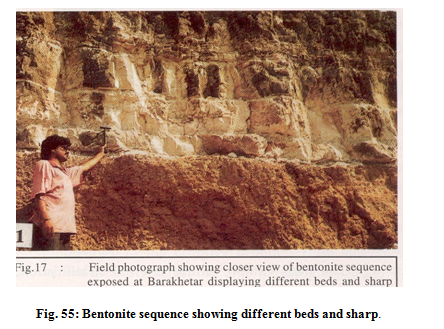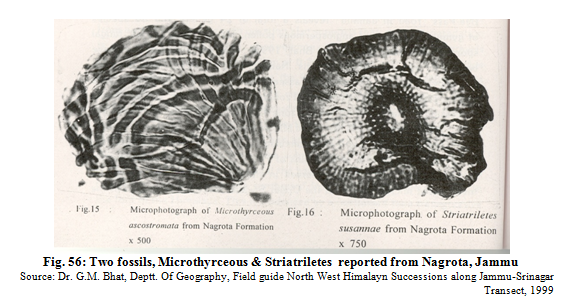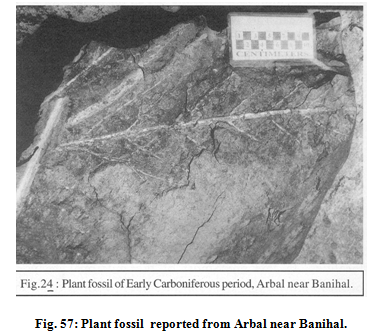Bio-diversity in Jammu, Kashmir, Ladakh: Status Of Biodiversity In J&K
This article has been sourced from an authoritative, official readers who wish to update or add further details can do so on a ‘Part II’ of this article. |
Contents |
The source of this article
Bio-diversity in Jammu, Kashmir, Ladakh
By the Department of Forests, Government of Jammu and Kashmir
Bio-diversity in Jammu, Kashmir, Ladakh: Status Of Biodiversity In J&K
Broadly speaking, Biodiversity of J&K can be categorized into following types of Ecosystems:
1. Biodiversity of Agricultural Ecosystems.
2. Biodiversity of Fresh Water Ecosystems
3. Biodiversity of Forest Ecosystems
4. Biodiversity of Cold Desert Ecosystems.
Wild Biodiversity
All plants and animal forms including microscopic organisms which originated or colonized the available habitats on their own and are thriving without man’s assistance come under the category of Wild Biodiversity. Such life forms are more adopted to local conditions and have the inner resilience to cope with the changing environmental pressures.
Wild Flora of J&K
The perusal of literature on the floristic studies of J&K reveals that Victor Jacquemont (1803-82) was the first botanist to enter the picturesque valley of Kashmir to undertake the floristic study of that time. He collected a large number of plants and his collections were studied by J. Cambessedes & F. Decaisne (1845). W. Morrcraft was the first European to study the plants of Ladakh region.
He also studied the plants of Kashmir valley from 1822 onwards. Godfrey Thomas Vigne (1835) collected 99 specimens from Kashmir and neighbourhood. Falconer, another famous plant collector also made notable collections from Kashmir in 1839. John Forbes Royle sent many collectors to Kashmir during 1833-1839 and published an illustrated account of Kashmir plants in 1839. Thomas Thomson (1848) collected several plants from different parts of the state and data was published in London Journal of Botany Vol. 1 : 68, 1849. Other botanists who ventured into the floristic studies of the Kashmir included Schlagint weit (1855-1877), William Hay (1862), J.L. Stewart (1868) and Handerson & Hume (1873). C.B. Clarke visited Kashmir in 1876 and collected a number of specimens. Duthie (1893-1894) recorded his floristic observations in the Records of Botanical Survey of India.
The first half of the present century witnessed the publication of two important books, B.O. Coventry’s, “Wild Flowers of Kashmir”(1923-30) and E. Blatter’s “Beautiful Flowers of Kashmir” (1927-28). Both these books were known better for their contribution in promotion of popular knowledge than their taxonomic value.
Other notable additions to the floristc studies of the period include the work of Meebold (1909), Keshavanand IFS (1906-08), Steward (1916-1945), Lambert (1933), Blatter(1927), Bamber(1919), Mukerji(1940) and Pennell(1943). Hooker(1872-1897) also described plants of Kashmir in his book, “Flora of British India”. Lambert (1935) listed the forest trees and shrubs of J&K State.
After the reorganization of the Botanical Survey of India, T.A. Rao in 1960 made the first botanical exploration in some parts of the state and account is published in the records of Botanical Survey of India. The explorers of recent times include Kapoor et al (1963, 1986) Y.K. Sarin (1971), Singh and Kachroo (1976) Dhar and Kachroo (1983), Brij Mohan Sharma (1981) who have made contribution towards documentation of various floras of different parts of the State. The recent flora entitled “Flowers of the Himalaya”, by Polunin & Stantion (1984), “Flora of Jammu and Plants of Neighborhood” by B.M. Sharma & P Kachroo (1981), Flora of Trikuta Hills by S.K. Kapoor and Y.K. Sarin (1989), “Flora of Udhampur” (1998) by Ajai Swami & B.K. Gupta and Wild and Cultivated Plants of Jammu, Kashmir and Ladakh by Om. Prakash Vidharthi, IFS (1997) has also contributed towards floristic studies of this State. Some of the notable works in this field are:
Forest Flora of Srinagar and plants of neighborhood by G. Singh & P. Kachroo (1987). 1. The flora of Ladakh by Stewart R.R. (1916-17). 2. Flora of upper Lidder valleys of Kashmir Himalayas by B.M. Sharma & P.S. Jamwal Vol I & Vol II. 3. Flora of Jammu and plants of neighborhood by B.M. Sharma & P. Kachroo (1981). 4. Flora of District Doda of Bachan Lal Whellum & Rani Mangotra (Ph.D. work). 5. In addition to these works in the field of higher plants, exploration and documentation of lower group of plants has also been attempted by various workers and notable works are:
1. Algal Flora of Ladakh by Shashi Kant & Pushp Gupta. (1998).
2. Diversity of Macro fungi of Bhaderwah by Rajkumar Rampal
3. Floristic studies in Bryophytes of Kashmir Himalaya by F.A. Bandey (1997).
4. Taxonomic studies on Hepatic Flora of District Jammu by Sarika Gupta (2002)
5. Hepaticae & Anthocerotae of Jammu Division by Mohd. Tanwir & Anima Langar (Unpublished work).
6. The Hepaticae of Kashmir Valley by S.C. Srivastava (1979).
Based on¬¬ available data (Published and Unpublished) diversity of various plant groups in J&K is represented as under:
Table 26: Plant group wise number of species reported
Group |
Sub Group |
No. of Species reported |
|||
|
<st1:City w:st="on">Jammu</st1:City> Region |
<st1:place w:st="on">Kashmir Region |
Ladakh Region |
J&K |
||
|
Algae |
Cyanophyta Chlorophyta Chrysophyta Bacillariophyta Xanthophyta Dinophyta Euglenophyta Cryptophyta Rhodophyta Charophyta Sub-Total |
13 400 |
054 170 002 163 002 002 013 - - - 406 |
171 440 008 175 015 018 018 001 002 - 848 |
900 |
|
Fungi |
Phycomycetes Ascomycetes Basidiomycetes Deuteromycetes Sub Total |
300 |
023 084 175 140 422 |
11 |
450 |
|
Bryophytes |
Liverworts Hornworts Mosses Sub Total |
66 4 13 83 |
48 - 162 210 |
9 - - 9 |
250 |
|
Pteridophytes |
Ferns |
93 |
93 |
- |
100 |
|
Gymnosperms |
Cupressaceae Ephedracere Ginkgoaceae Pinaceae Taxodiaceae Sub Total |
11 |
04 01
06 01 13 |
3 |
13 |
|
Angiosperms |
Dicots Monocots Sub Total |
1300 |
1590 410 2000 |
880 - 880 |
2403 0651 3054 |
Source: <st1:PlaceType ">University of Jammu & University of Kashmir (Ph.D. & other research documents consulted)
Fossil records
The Pleistocene flora of Kashmir stands described by Puri (1945 to 48) and Mittre (1964). This flora represented 128 modern species spread over 69 genera & 34 families of angiosperms. Three distinct types of flora identified in the valley are:
1. The Liddermarg Flora: This flora comprised mainly of Quercus leucotrichophora and Quercus glauca which are today totally absent in the area. The other prominent species were those of Pinus, Cedrus, Mallotus, Ficus, Acer, Litsaea, Cinnamomum, Machilus, Phoebe, Buxus, Skimmia, Toddalia, Pittosporum, Rhamnus, Berchemia, Myrsine, Syringa, Wendlandia, Pyrus, Cotoneaster, Alnus, Berberis, Cornus, Parrotiopsis, Dermodium, Inula, Acorus, Scirpus, Cyperus, etc. (Puri, 1960, Miltre, 1964).
2. Laredura Flora: In this type of flora both tropical & temperate elements were discovered but tropical species were predominant. Main tropical species recorded are Woodfordia fruticosa, Mallotus philippenensis, Engelhardtia colebrookiana, Odina woodier & Olea cuspidata.
3.Temperate species include Ulmus wallichiana, Quercus semicarpifolia, Quercus dilatata, Quercus ilex, Betula alnoides, Betula utilis, Acer caesium, Acer villosum, Berberis lycium and Conifer Genera like Pinus, Cedrus & Abies (Puri & Mittre, 1960, 64) Temperate species are still existing in the valley but sub-tropical Geneva like Mallotus, Woodfordia, Myrsine, Engelhardtia & Olea are non-existent today and this supports the view that Liddermarg flora developed under tropical conditions.
3. Ningal Nullah Flora: This flora was usually represented by forms like poplars, willows, cherries, walnuts, maples, elms, elders with an abundance of spruce, silver fir, pine & cedar (Puri et al 1983). Various `modern representatives of these plants still flourish in the Valley and occupy an altitudinal zone between 2100 m & 3000 m on the Northern side of the Pir-Panjal. This indicates that at least in this part of Kashmir, there persisted temperate climate during the pleistocene.
4.The earliest flora reported from J&K is from Early Carboniferous of Kashmir (Liddar Valley, Banihal) to late pleistocene (Siwalik Strata of Jammu), Karewas of Kashmir. The state of J&K is endowed with rich fauna ranging in age from Cambrian to recent fauna include both invertebrates and vertebrates.
A number of publications reporting fauna and flora from the state are available in the records of Geological Society of India and Professional Research Journals of National and International status. The records and research journals are available with GSI and Geology Department, University of Jammu, Jammu. The Departments hosts a record of research publications of last 150 years.
Source: Dr. G.M. Bhat, Deptt. Of Geography, Field guide North West Himalayn Successions along Jammu-Srinagar Transect, 1999
Recent contribution on invertebrate fauna from the state is those of GSI workers, University of Jammu and Wadia institute of Himalayan Geology. The vertebrate fauna reported from the state is mostly from Shiwalik and Karewas strata. The contributions include those of D.N. Wadia, GSI workers, Scientists of Wadia Institute of Himalayan Geology, ONGC and University of Jammu.
Bhat and his co-workers have also reported flora from Lidder valley and Margan pass which is the earliest known flora from the Himalaya (early carboniforous may be U. Silurian). Other reports on flora from J&K state are those of Gangomopteris and Glossoopteris from Zewan and Nishatbagh beds of Kashmir.
Most important vertebrate faunal localities include Ram Nagar (Udhampur), Uttarbani area in Jammu. Karewa beds at Pampore, Shopian, Hirpura, Pattan, etc. These localities have a great potential for fossil fauna and need to be explored.
The type localities for fossil flora include Lidder valley Banihal area, Gulabgarh pass and Nishatbagh and Zewan beds. Siwalik and karewa beds also yield micro fauna and flora. Faculty of the Departments of Geology, University of Jammu is actively engaged in its exploration. They include Prof. G.R. Prasad (micro vertebrates), Dr. M.A. Malik (Micro-invertebrate fauna), Bhat, G.M. and co-workers (micro flora).
Cambrian fossils of Kashmir: Trilobites and Brachiopods, pteropod hyolithes and cysted eucystites.
Ordovician-Silurian fauna: Brachiopods and crinoids, corals and strophomenids. Carboniferous fossils: Brachiopods, Bryozoans, Trilobites, Lamellibranchs, (Flora: Pteridophytes, Gangomopteris beds, Glossopteris,) Amphibian, Archegosaurus ornatus and Fishes - Amblypterus kashmirensis and A. symmetricus.
Fossil Plants: These have been obtained from Liddar valley, Gulabgarh pass, Gulmarg, Khunamuh and Resin Spores, Nagmerg, Bryozoa, Corals and Brachiopods.
Triassic fossils of Kashmir: Ammonoids, (Meekoceras, ophioceras, otoceras,) Lamellibranchs, Brachiopods.
Jurassic: Ammonites, Beleminites, Lamellibranch and Brachiopods.
Cretaceous: Foraminifera, Gastropods and Corals.
Tertiery: Karewas: Representatives of Molluscs and some plants, Elephas, Rhinoceras, Bovids and Mammothus. Birds, Fish and Plants.
Siwalik: Representatives of Equidae, Rhinoceratidae, Suidae, Giraffidae, Bovidae, proboscidea, Anthracotheridae, Hippopotamidae, Primates, stand reported.
The Muree structural formation which is exposed around Patnitop-Batote area represents sandstones, slates, shales and claystones. A bed found in this belt called Larea bed is lenticular with a Palkhai Syncline. The fauna collected consist of 2 fragments of ridge crest of Probo-scidean molar and a dozen species of Lammelli-branches (Khan et al, 1971) which include Nucula, Acila, Nuculana, Mytilus, Unio, Tellina, Apolymetis, Solecurtus, Venus, Meretrix, Pitar, Pholadomya, Lyonsia sp. & Thracia species.
Microflora obtained from Nagrota formation i.e. upper Shivalik sediments exposed at Bantalab-Jammu Byepass road reveals a total of 24 genera and 30 species of Gymnospermous and angiospermous pollen, pteridophytic spores, fungal spores & conidia (Sarkar & Bhat, 1998).
The distributional pattern of spores & pollen grains in the Bantalab upper Shivalik Succession indicates the presence of stagnant fresh water conditions in view of high incidence of Zygospores of Zygnema and Spirogyra.
The presence of Microthyraceous ascostromata indicates a warm and humid climate having rain forest type of vegetation. Occurrence of aquatic pollen grains belonging to Lotus & Typha family as well as pteriodophytic spore Striattriletes suggest a swampy environment in the area.The geological history of the Kashmir Valley has experienced the upliftment of the present Pir Panjal range by about 2000 m to keep the mansoon influences away from present Kashmir (Wadia, 1961). The pre-historic Satisar lake silted up and water was drained off leaving behind remanants in the form of present day lakes like Dal, Manasbal and the Wular. The Karewas lie in isolated tracts and at depths below 300 m having remains of pleistocene age. During ice-age valley experienced several periods of extreme cold alternating with warm periods culminating into the temperate flora of the Kashmir valley.
The Pleistocene flora of Kashmir stands described by Puri (1945 to 48) and Mittre (1964). This flora represented 128 modern species spread over 69 genera & 34 families of angiosperms. Three distinct types of flora identified in the valley are:
4.The Liddermarg Flora: This flora comprised mainly of Quercus leucotrichophora and Quercus glauca which are today totally absent in the area. The other prominent species were those of Pinus, Cedrus, Mallotus, Ficus, Acer, Litsaea, Cinnamomum, Machilus, Phoebe, Buxus, Skimmia, Toddalia, Pittosporum, Rhamnus, Berchemia, Myrsine, Syringa, Wendlandia, Pyrus, Cotoneaster, Alnus, Berberis, Cornus, Parrotiopsis, Desmodium, Inula, Acorus, Scirpus, Cyperus, etc. (Puri, 1960, Mittre, 1964).
Fig. 57: Plant fossil reported from Arbal near Banihal. Source: Dr. G.M. Bhat, Deptt. Of Geography, Field guide North West Himalayn Successions along Jammu-Srinagar Transect, 1999
5.Laredura Flora: In this type of flora both tropical & temperate elements were discovered but tropical species were predominant. Main tropical species recorded are Woodfordia fruticosa, Mallpic otus philippensis, Engelhardti, Colebrookia, Odina woodier & Olea cuspidata. Temperate species include Ulmus wallichiana, Quercus semicarpefolia, Quercus dilatata, Quercus itex, Betula alnoides, Betula utilis, Acer caesium, Acer villosum, Berberis lycium and Conifer Genera like Pinus, Cedrus & Abies (Puri & Mittre, 1960, 64) Temperate species are still existing in the valley but sub-tropical Geneva like Mallotus, Woodfordia, Myrsine, Engelhardtia & Olea are non-existent today and this supports the view that Liddermarg flora developed under tropical conditions.
6.Ningal Nullah Flora: This flora was usually represented by forms like poplars, willows, cherries, walnuts, maples, elms, elders with an abundance of spruce, silver fir, pine & cedar (Puri et al 1983). Various `modern representatives of these plants still flourish in the Valley and occupy an altitudinal zone between 2100 m & 3000 m on the Northern side of the Pir-Panjal. This indicates that at least in this part of Kashmir, there persisted temperate climate during the pleistocene.
7.Thus during the successive stages in the phytogeographical evalution of Kashmir valley since early quaternary as a result of repeated cooling & warming of climate in the pleistocene times together with a cycle of organic movements, the original vegetation got transformed from a sub-tropical type with typical Oak-Laurel community to the present temperate type with pine-deodar-silver fir-cherry-horse-chestnut community and in the process Oak, laurel-chir communities vanished.


